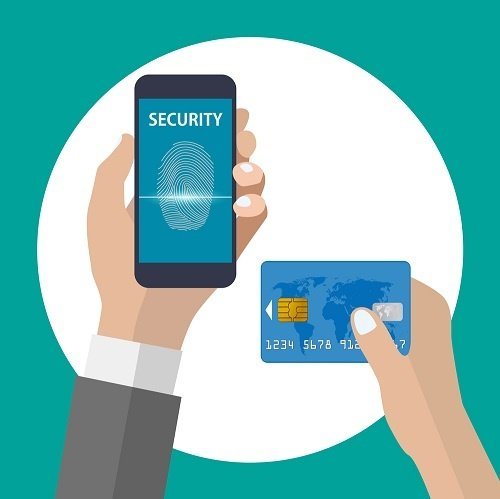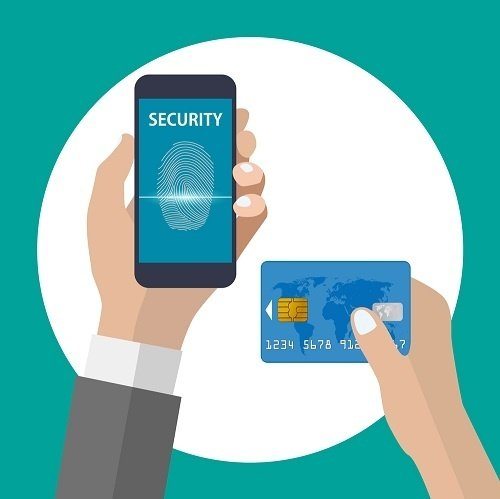
Biometrics are infiltrating the financial industry. As the digital age expands, it is important to find a balance between security and accessibility.
Electronics have permeated virtually every aspect of our lives. As we store more and more information online or in mobile apps, it is important to strike a balance between security and accessibility. But, memorizing dozens of passwords had many consumers overwhelmed. Now, the focus is shifting towards implementing efficient, user-friendly security measures that will still provide exceptional protection. Traditional passwords are becoming a thing of the past.
Biometrics are quickly finding their place in banking security. Because certain traits –like fingerprints, eyes, and heart rate- are uniquely our own, they offer a potential for greater security than passwords. While passwords can be shared (intentionally or otherwise), biometrics are extremely difficult to replicate. Despite all the excitement, biometric technology still has a while to go before it can be completely dependable. Here are four important factors to be aware of as we keep our eye on biometrics.
1. Biometrics will improve the simplicity of banking

Password entries cause a lot of friction. We have to remember which passwords match with what devices, and we are continuously adding to the list as we create more online accounts. Furthermore, password authentication requires meticulous typing each type we have to enter them, all of which leads to frustration. A survey conducted by EyeVerify showed that 86 percent of respondents agree that biometrics make logging into mobile banking apps easier than traditional password entry. Many banks, including Santander, are even allowing customers to use voice recognition to quickly send payments to individuals established in their payee list. So long as the latest technology is used, this payment method is said to be secure because modern voice recognition doesn’t just analyze the voice, but it also considers other physical features of the head that impact sound production. The extent of this isolated security is questionable, but biometrics do have the potential to streamline remote banking by making it easier and faster for customers to use.
2. They will offer better security

Passwords are definitely not immune to theft. In fact, they are often quite vulnerable depending on if (and where) we store them, how many different passwords we use, and how often we change them. With biometrics, many of these problems become irrelevant. While biometrics are not completely fraud-proof, it is much more difficult to replicate a fingerprint, voice, or eye scan than it is to figure out a password. However, never underestimate a hacker. Banks should continue to research how to make their biometric technology secure against even the smallest of odds.
Biometric features also allow for more secure multi-factor authentication. Many banks are already using multi-factor authentication in the form of passwords and personal questions. However, personal questions are actually very insecure and even provide hackers with valuable information if breached. Because of this, there is often an extra step to the log-in process. If your account is accessed from an unknown device, many banks and other service providers will call or text a familiar device with an access code. Steps like these lead to greater protection, but introducing multiple layers of biometric authentication would enhance security even further.
3. They are device dependent

Biometric security features like voice, face, or fingerprint recognition most likely require a specific device in order for users to access their personal information. This could lead to problems if passwords are completely eliminated. If banking apps require biometrics authentication to access accounts, and those security measures require certain devices, they risk isolating a percentage of customers. Instead, banks should take a hybrid approach when implementing biometrics. Richard Parris, chief executive at Intercede, said that instead of only using biometrics, “businesses need to be looking at strong authentication that incorporates three distinct elements- possession (something you have, such as a smartphone), knowledge (something you know, such as a PIN), and inherence (something you are, such as an iris scan).” This combination of new technology with existing access control will allow for a smoother transition into biometrics, as well as extreme accountability. However, it is also important to continue research on accessible biometric features beyond devices.
4. Demand is high, but experience is not

A study by the Department of Computer Science at the University of Oxford and Mastercard showed that 93 percent of consumers in the finance sector are interested in using biometric authentication methods. However, consumers seem to be a few steps ahead of professionals in the financial industry. While 92 percent of the industry says they’re interested in deploying mobile biometrics, only 13 percent have already done so. Perhaps this is because although 88 percent of professionals expect to be involved in decisions regarding biometrics, only 36 percent of them believe they have adequate experience. Two thirds of the professionals say they have little to no experience at all. Biometrics are a learning curve for everyone. But, before a new form of banking security can be implemented, it must be fully understood.
There’s no doubt biometrics are on the rise for banking security, but it may be a while before identity authentication without passwords is completely secure.

